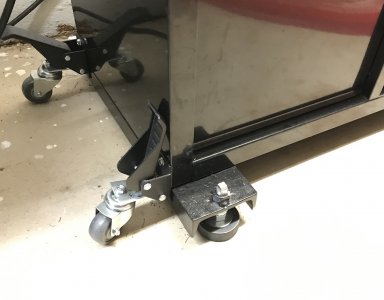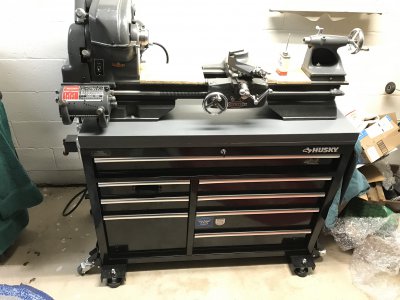- Joined
- Feb 13, 2017
- Messages
- 2,138
I use a Craftsman 12X36 (101.27440), basically an Atlas machine. I mounted the machine to a heavy wall box tube and trued it to the tubing. Then mounted the tubing to a chip pan and a homemade stand. The machine lifted one foot off the floor and was shimmed. It isn't "level" but is true to the tubing. The term is a "strongback" from my time on ships. An Atlas is a fairly light weight machine, as such go. The strongback provides a rigid, and quite stable, mounting point. Even though the stand is less so. My solution, but it does what its' supposed to do.
.
.



